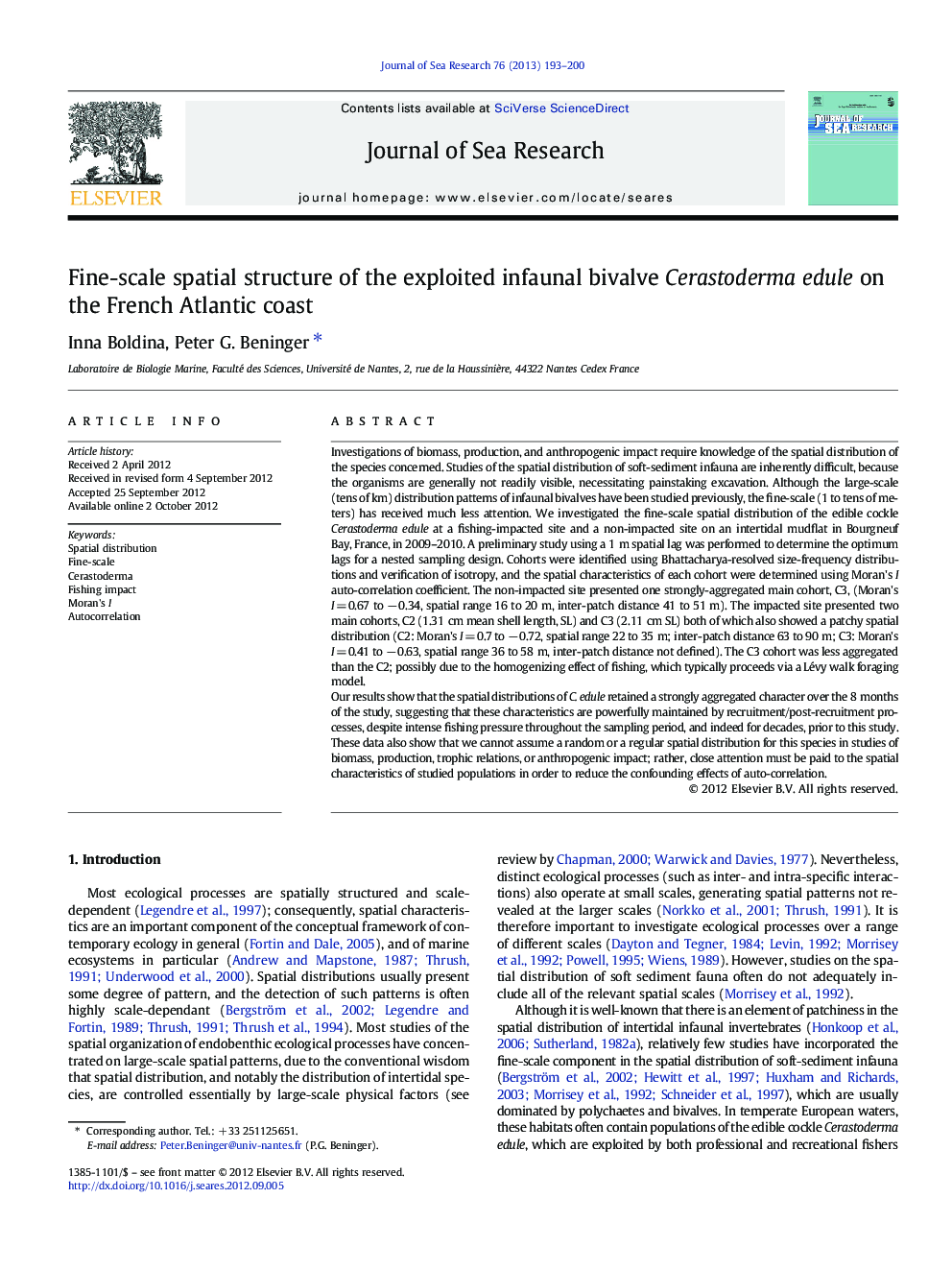| کد مقاله | کد نشریه | سال انتشار | مقاله انگلیسی | نسخه تمام متن |
|---|---|---|---|---|
| 4549899 | 1627498 | 2013 | 8 صفحه PDF | دانلود رایگان |

Investigations of biomass, production, and anthropogenic impact require knowledge of the spatial distribution of the species concerned. Studies of the spatial distribution of soft-sediment infauna are inherently difficult, because the organisms are generally not readily visible, necessitating painstaking excavation. Although the large-scale (tens of km) distribution patterns of infaunal bivalves have been studied previously, the fine-scale (1 to tens of meters) has received much less attention. We investigated the fine-scale spatial distribution of the edible cockle Cerastoderma edule at a fishing-impacted site and a non-impacted site on an intertidal mudflat in Bourgneuf Bay, France, in 2009–2010. A preliminary study using a 1 m spatial lag was performed to determine the optimum lags for a nested sampling design. Cohorts were identified using Bhattacharya-resolved size-frequency distributions and verification of isotropy, and the spatial characteristics of each cohort were determined using Moran's I auto-correlation coefficient. The non-impacted site presented one strongly-aggregated main cohort, C3, (Moran's I = 0.67 to − 0.34, spatial range 16 to 20 m, inter-patch distance 41 to 51 m). The impacted site presented two main cohorts, C2 (1.31 cm mean shell length, SL) and C3 (2.11 cm SL) both of which also showed a patchy spatial distribution (C2: Moran's I = 0.7 to − 0.72, spatial range 22 to 35 m; inter-patch distance 63 to 90 m; C3: Moran's I = 0.41 to − 0.63, spatial range 36 to 58 m, inter-patch distance not defined). The C3 cohort was less aggregated than the C2; possibly due to the homogenizing effect of fishing, which typically proceeds via a Lévy walk foraging model.Our results show that the spatial distributions of C. edule retained a strongly aggregated character over the 8 months of the study, suggesting that these characteristics are powerfully maintained by recruitment/post-recruitment processes, despite intense fishing pressure throughout the sampling period, and indeed for decades, prior to this study. These data also show that we cannot assume a random or a regular spatial distribution for this species in studies of biomass, production, trophic relations, or anthropogenic impact; rather, close attention must be paid to the spatial characteristics of studied populations in order to reduce the confounding effects of auto-correlation.
► Autocorrelation analysis of fine-scale distribution of C. edule, shows clear aggregation.
► Fine-scale spatial characteristics of C. edule are presented.
► A fishing-impacted vs. non-impacted site shows attenuated aggregation.
► The fished size class shows the most attenuated aggregation characteristics.
► Accurate estimates of biomass and production require knowledge of spatial structure.
Journal: Journal of Sea Research - Volume 76, February 2013, Pages 193–200